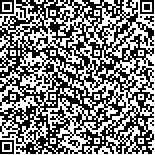| Quote
: |
刘倩,尹鸿智,金佳燕,钟欢,石佳,常小荣,刘密.艾灸对慢性萎缩性胃炎大鼠局部穴区组织代谢的影响[J].湖南中医药大学学报英文版,2021,41(10):1498-1505.[Click to copy
] |
|
| |
|
|
| This paper
:Browser 2073times Download 1287times |
| 艾灸对慢性萎缩性胃炎大鼠局部穴区组织代谢的影响 |
| 刘倩,尹鸿智,金佳燕,钟欢,石佳,常小荣,刘密 |
| (湖南中医药大学, 湖南 长沙 410208) |
| 摘要: |
| 目的 采用核磁共振氢谱技术(1H nuclear magnetic resonance,1H-NMR)观察艾灸对慢性萎缩性胃炎(chronic atrophic gastritis,CAG)大鼠局部穴区组织代谢的影响,从代谢的角度探究艾灸治疗CAG可能的作用靶点和相关代谢路径。方法 运用随机数字表法将42只SD大鼠分为3组(正常组、模型组和治疗组),每组14只。通过N甲基-N'-硝基-N亚硝基胍(N-methyl-N'-nitro-N-nitrosoguanidine,MNNG)联合法制备CAG模型,造模成功后,正常组和模型组做抓取、捆绑处理,治疗组予以艾灸足三里、中脘干预。治疗14 d后,运用HE染色法观察胃组织病理学变化,运用1H-NMR技术检测足三里局部穴区组织代谢物,以Chenomx NMR Suite软件分析所得数据。结果 HE染色下,模型组大鼠胃组织光镜下可见固有腺体萎缩、结构紊乱且数量减少,符合CAG病理诊断标准;治疗组大鼠胃组织有一定程度的改善。代谢物分析,与正常组相比,模型组中谷氨酰胺、琥珀酸、赖氨酸、富马酸、次黄嘌呤、一磷酸腺苷显著降低;而磷酸胆碱/甘磷酸胆碱、天冬酰胺、天冬氨酸、N-乙酰天门冬氨酸、酪氨酸、苯丙氨酸、黄嘌呤、肌苷则升高。与模型组比较,治疗组腺苷、天冬酰胺、N-乙酰天门冬氨酸、谷氨酰胺、磷酸胆碱、甘磷酸胆碱、肌苷、黄嘌呤等代谢物水平发生逆转。结论 从代谢角度说明,艾灸干预可调节CAG大鼠局部穴区组织代谢紊乱的神经递质和能量代谢,可能通过丙氨酸、天冬氨酸、谷氨酸代谢,嘌呤代谢和D-谷氨酰胺、D-谷氨酸代谢实现。 |
| 关键词: 慢性萎缩性胃炎 艾灸 核磁共振氢谱 代谢通路 神经递质 能量代谢 |
| DOI:10.3969/j.issn.1674-070X.2021.10.005 |
| Received:July 20, 2021 |
| 基金项目:国家重点基础研究发展计划(973计划)项目(2015CB554502);国家自然科学基金项目(81574082,81874509);湖南省科技人才托举工程项目(2019TJ-Q04);湖南省“芙蓉学者奖励计划”(湘教通〔2020〕58号);湖南省高层次卫生人才“225”工程培养项目(湘卫函〔2019〕196号);湖南省121创新人才培养工程(湘人社函〔2019〕192号);湖南省中医药科研计划项目(2017120);国家中医药管理局全国名老中医药专家传承工作室项目(国中医药人教函〔2019〕41号);常小荣国家级教学名师工作室建设项目。 |
|
| Effect of Moxibustion on Metabolism of Local Acupoint Tissue of Rats with Chronic Atrophic Gastritis |
| LIU Qian,YIN Hongzhi,JIN Jiayan,ZHONG Huan,SHI Jia,CHANG Xiaorong,LIU Mi |
| (Hunan University of Chinese Medicine, Changsha, Hunan 410208, China) |
| Abstract: |
| Objective 1H nuclear magnetic resonance (1H-NMR) technology was used to observe the effect of moxibustion on the metabolism of local acupoint tissue in rats with chronic atrophic gastritis (CAG), and to explore the possible targets and related metabolic pathways in the treatment of CAG by moxibustion from the perspective of metabolism. Methods According to the random number table method, 42 SD rats were divided into 3 groups (normal group, model group and treatment group), with 14 rats in each group. The CAG model was prepared by the combined method of N-methyl-N-nitro-N-nitroso guanidine (MNNG). After successful modeling, the normal group and model group were grasped and bound, and the treatment group was treated with moxibustion "Zusanli" (ST36) and "Zhongwan" (RN12) intervention. After 14 days of treatment, HE staining was used to observe the pathological changes of gastric tissue, 1H-NMR technology was used to detect the metabolites of local acupoint tissue in "Zusanli" (ST36), and the data obtained were analyzed by Chenomx NMR Suite software. Results Under HE staining, the gastric tissue of the model group showed proper gland atrophy and structural disorder, and the number of proper glands was reduced under light microscope, which met the CAG pathological diagnostic criteria. The gastric tissue of the treatment group had a certain degree of improvement. In metabolite analysis, compared with the normal group, glutamine, succinic acid, lysine, fumaric acid, hypoxanthine, and adenosine monophosphate in the model group were significantly reduced; while phosphorylcholine/choline alfoscerate, asparagine, aspartic acid, N-acetyl aspartic acid, tyrosine, phenylalanine, xanthine, and inosine were elevated. Compared with the model group, the levels of metabolites such as adenosine, asparagine, N-acetylaspartic acid, glutamine, phosphocholine, choline alfoscerate, inosine, and xanthine were reversed in the treatment group. Conclusion From the perspective of metabolism, moxibustion intervention can regulate the neurotransmitter and energy metabolism of local acupoint tissue metabolism disorders in CAG rats. It may be realized through the metabolism of alanine, aspartic acid, glutamate, purine metabolism and D-glutamine and D-glutamic acid metabolism. |
| Key words: chronic atrophic gastritis moxibustion 1H nuclear magnetic resonance metabolic pathway neurotransmitter energy metabolism |
|

二维码(扫一下试试看!) |
|
|
|
|


